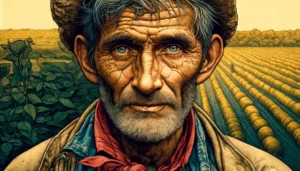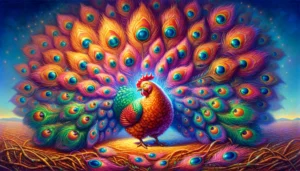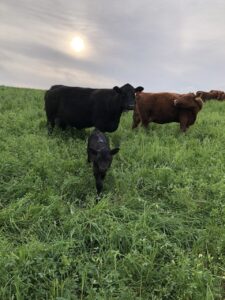U.S. Farm Census Reveals Shocking Loss of Farms
Farmers Suggest “Try Restarting the Country”
By Grainy McLaughlin, Agriculture Satirist
The 2022 U.S. Agricultural Census has dropped, and the numbers are so grim that even the cows are mooing in solidarity. In just five years, the U.S. lost nearly 142,000 farms and 20.1 million acres of farmland, while farmers saw their expenses skyrocket like corn prices during a drought. Agriculture Secretary Tom Vilsack called it a “wake-up call,” but judging by the reactions from farmers, it feels more like a collective facepalm.
With farm losses piling up, “Hollywood should make a film about this—Field of Fewer Dreams.
Farm Size Increases: Proof That Bigger Isn’t Always Better
The average farm size ballooned to 463 acres, but not because farmers are thriving. “It’s like being the last kid left on the playground—you look bigger by default,” said a farmer in Iowa.
Data from the USDA showed that mid-size operations shrank the most, leaving behind a few mega-farms and struggling small plots. Neighbors have taken to joking that their backyards are now “certified ranches.”
Even a local farming equipment dealer got in on the humor, advertising tractors as “perfect for your unnecessarily large but totally struggling operation.”
Farms Vanish, but Farmer Age Increases: Coincidence?
The average farmer is now 58.1 years old, sparking concern that agriculture might be the new retirement home. “We’re not losing farms; we’re just consolidating them into geriatric clubs,” joked a 65-year-old farmer from Kansas.
Statistics show that farmers under 35 make up less than 10% of the industry. Meanwhile, a 30-year-old aspiring farmer asked, “Why would I get into farming when I could just invest in crypto and lose my money faster?”
Community groups are launching campaigns to attract younger farmers, but participation remains low. One organizer admitted, “It’s hard to compete with jobs that don’t require milking cows at 5 a.m.”
Losing 20.1 Million Acres: Did Someone Check Under the Couch?
The census revealed that 20.1 million acres of farmland have disappeared, leaving many farmers scratching their heads. “What, did it get raptured?” asked a bewildered rancher.
Aerial surveys show much of the land has been converted into housing developments and warehouses. “You can’t grow corn on concrete,” said a frustrated farmer from Ohio.
Even satellite images reveal urban sprawl creeping into former farmland, leading one agronomist to quip, “At this rate, the only thing we’ll grow is traffic jams.”
Small Farms Shrink, Big Farms Blink
Even farms over 1,000 acres are feeling the pinch. “Turns out, the bigger they are, the harder they fall,” said a farmer whose operation recently downsized to 800 acres. “It’s like trying to juggle flaming chainsaws—you’re going to drop one eventually.”
Industry reports show that input costs for large-scale farms have risen by 25%, making it harder to sustain growth. Meanwhile, small-scale farmers are left to wonder, “If they’re struggling, what hope do we have?”
Ag economists argue that diversification could help, but one farmer retorted, “Sure, I’ll diversify—just as soon as money grows on trees.”
Farm Expenses Up 23%: Inflation Even Hits the Hay
Farmers have been hit with a 23% increase in production expenses, leaving them scrambling to make ends meet. “At this point, I’m paying my cows to eat,” said a dairy farmer in Wisconsin.
USDA data confirmed that feed costs have doubled in some regions, while fertilizer prices remain sky-high. One farmer admitted, “I seriously considered selling my tractor to pay for fertilizer.”
Experts note that global supply chain issues have exacerbated the problem, but farmers remain unimpressed. “Great, blame the supply chain,” said one. “Meanwhile, I’m over here trying to grow crops with good vibes and duct tape.”
1.4% of Farms Account for 50% of Sales: The New Monopoly
With half of agricultural sales concentrated in just 1.4% of farms, small farmers are feeling left out. “We’re over here playing checkers while they’re playing Monopoly,” said a frustrated farmer.
Studies show that large-scale operations benefit from economies of scale, but smaller producers argue that the system is rigged. “We’re stuck on Baltic Avenue, and they own Boardwalk and Park Place,” said one.
Farmers markets have become a haven for small-scale producers, but even those face challenges. “It’s hard to compete when your competition owns a fleet of combines,” said a local vendor.
Livestock Feed Costs Skyrocket: Cows Demand Pay Raises
The rising cost of livestock feed has left farmers joking that their cows are considering unionizing. “I’m expecting them to show up with signs that say ‘Moo-vement for Fair Feed,’” said one rancher.
Market data shows that feed prices have doubled since 2020, forcing some producers to reduce herd sizes. “It’s heartbreaking,” said a cattle farmer. “I had to sell three cows just to feed the rest.”
Animal behaviorists have observed signs of stress in livestock, leading one to quip, “At least the cows and farmers are on the same page now.”
Ag Census and the Loss of 142,000 US Farms
Originally Published at FarmerCowboy.com
2025-01-03 09:44:05
Karl Hoffman is a distinguished agriculturalist with over four decades of experience in sustainable farming practices. He holds a Ph.D. in Agronomy from Cornell University and has made significant contributions as a professor at Iowa State University. Hoffman’s groundbreaking research on integrated pest management and soil health has revolutionized modern agriculture. As a respected farm journalist, his column “Field Notes with Karl Hoffman” and his blog “The Modern Farmer” provide insightful, practical advice to a global audience. Hoffman’s work with the USDA and the United Nations FAO has enhanced food security worldwide. His awards include the USDA’s Distinguished Service Award and the World Food Prize, reflecting his profound impact on agriculture and sustainability.





Elon Musk’s self-driving Teslas are here to make your commute more fun than ever.
The joy of learning is in the discovery, not the destination. ??